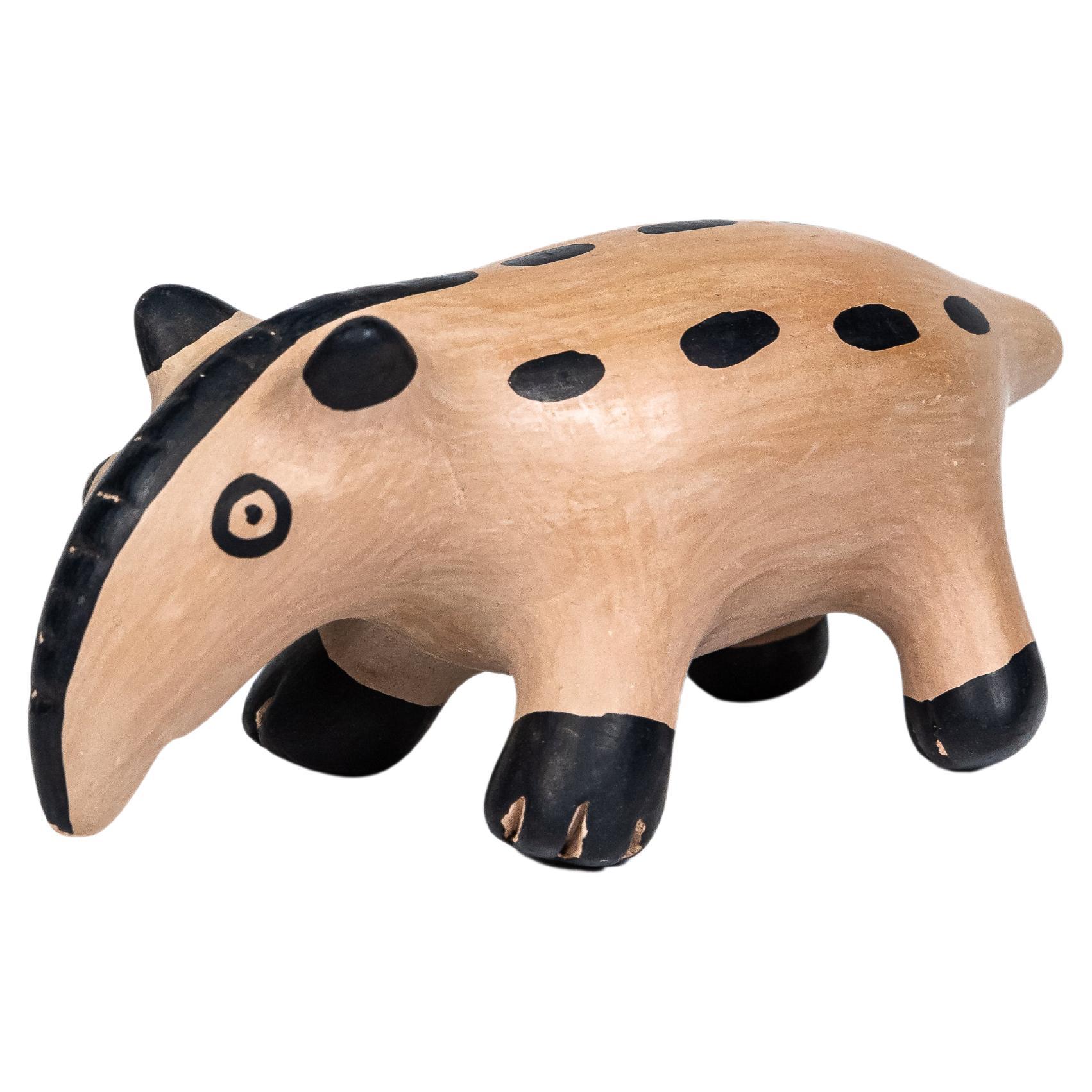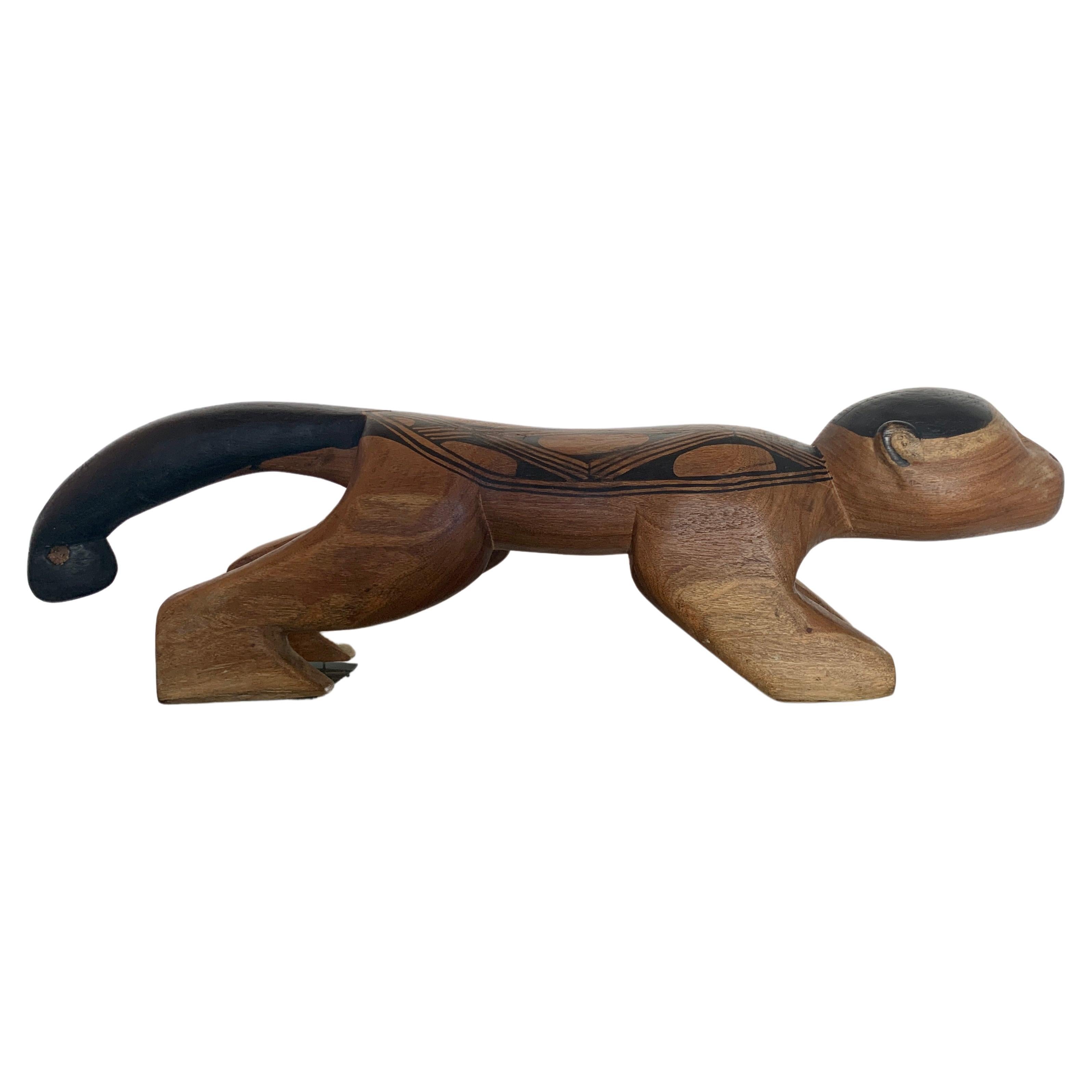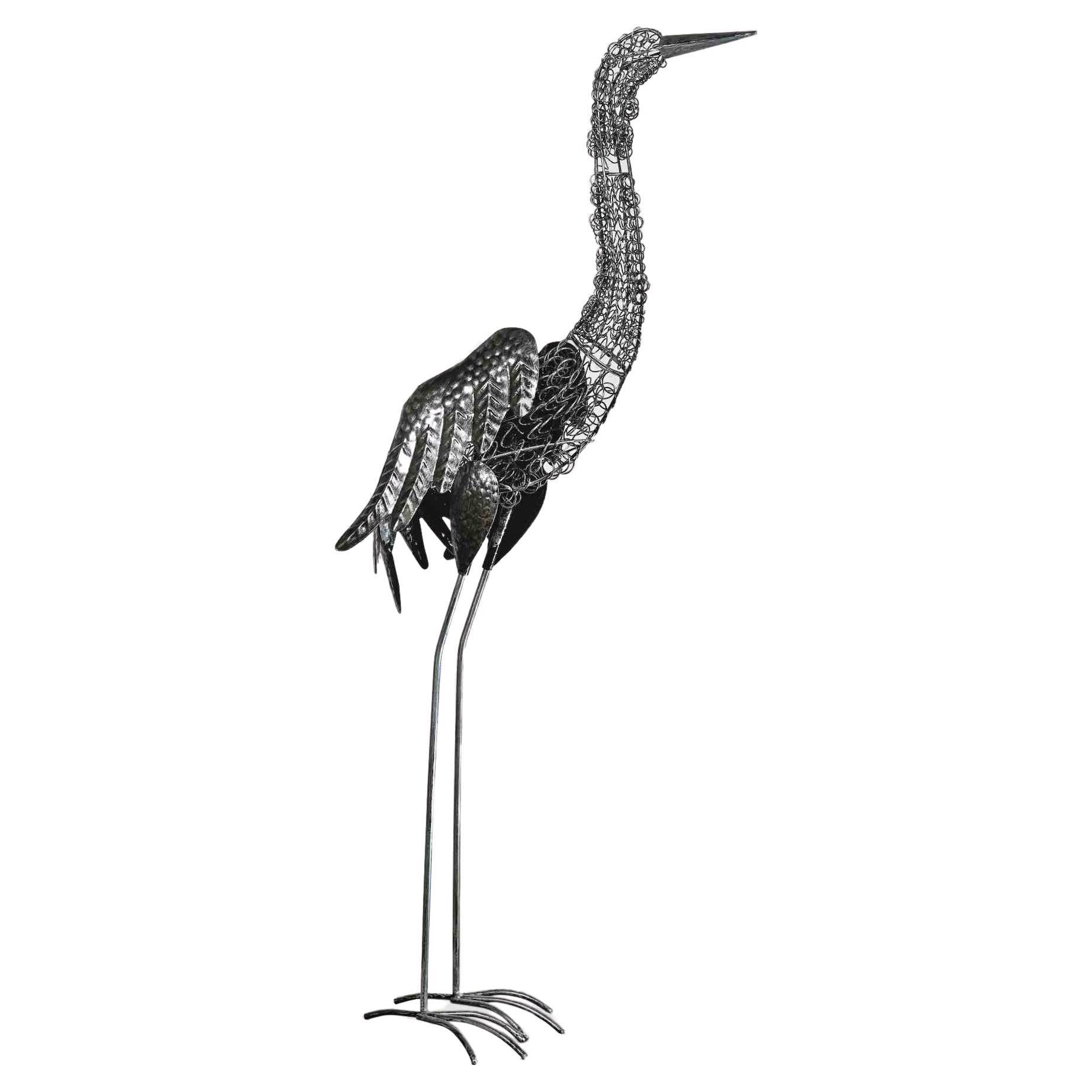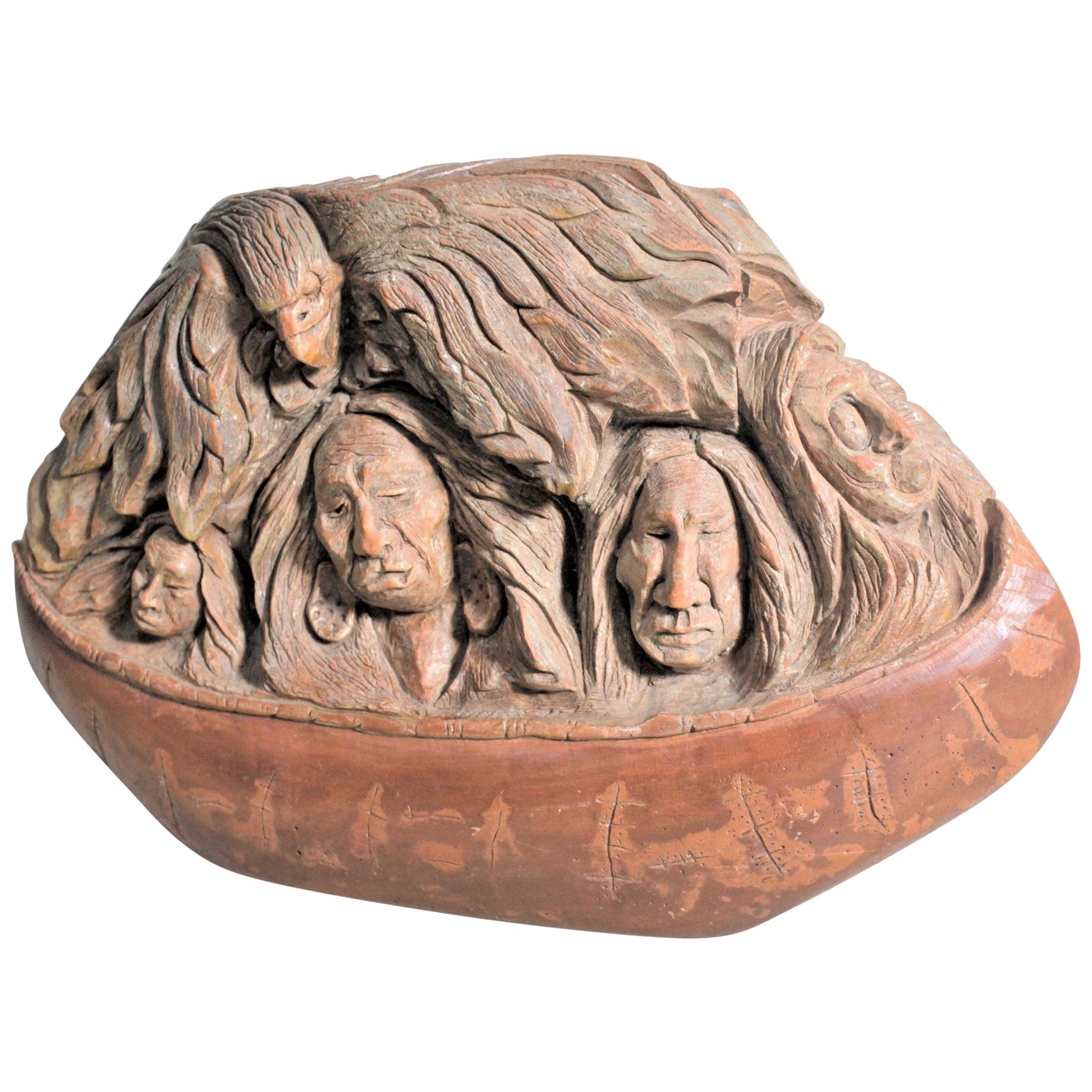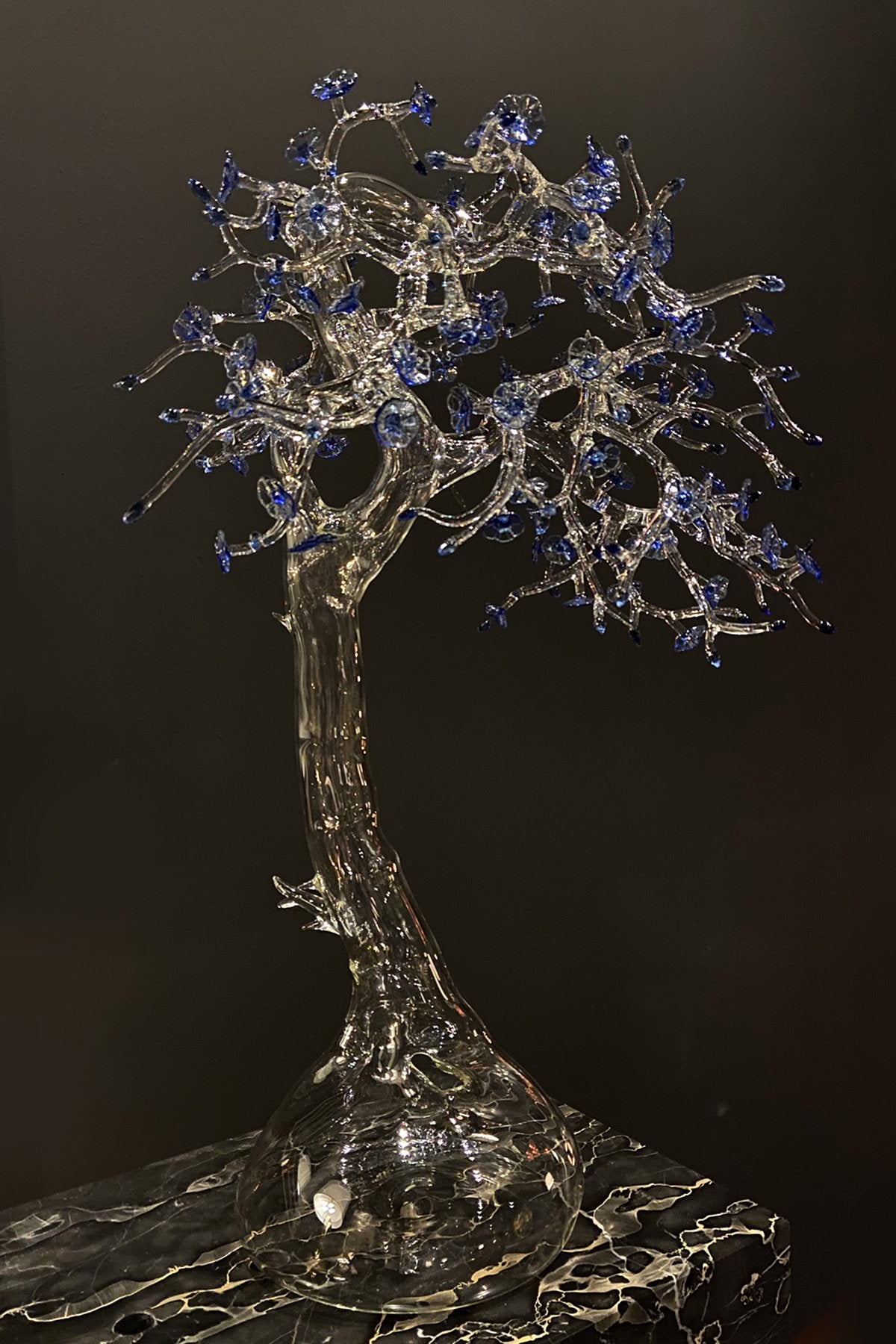Items Similar to Bench / Sculpture "Onça Pintada", by Indigenous Community Wauja, 2020s
Want more images or videos?
Request additional images or videos from the seller
Bench / Sculpture "Onça Pintada", by Indigenous Community Wauja, 2020s
About the Item
Originally used as a symbolic object by the indigenous ethnic groups of Upper Xingu, this bench is a contemporary creation made using traditional techniques and materials. Carved from a solid piece of wood, its hand-painted patterns give it a very graphic and sculptural look.
15% Of the profits from the sale of this item will be donated to the Xingu National Park Conservation Association.
Provenance: Indigenous community Wauja/ Alto Xingu - Brazil.
- Dimensions:Height: 46.06 in (117 cm)Width: 7.09 in (18.01 cm)Depth: 8.66 in (22 cm)
- Style:Primitive (In the Style Of)
- Materials and Techniques:
- Place of Origin:
- Period:
- Date of Manufacture:2020
- Production Type:New & Custom(One of a Kind)
- Estimated Production Time:Available Now
- Condition:
- Seller Location:PARIS, FR
- Reference Number:1stDibs: LU6408228573872
About the Seller
No Reviews Yet
Vetted Seller
These experienced sellers undergo a comprehensive evaluation by our team of in-house experts.
Established in 2021
1stDibs seller since 2022
12 sales on 1stDibs
Typical response time: <1 hour
- ShippingRetrieving quote...Ships From: Saint-Ouen, France
- Return PolicyThis item cannot be returned.
More From This SellerView All
- Wauja, Céramique Indigène Zoomorphe, "Tatu", 2020Located in PARIS, FRCette céramique est une création contemporaine de la tribu Wauja situé au Haut Xingu/ Brésil. Réalisée selon les méthodes traditionnelles avec des matières premières naturelles, son ...Category
2010s Brazilian Arts and Crafts Animal Sculptures
MaterialsCeramic
- Wauja/ Turuza. Monkey Sculpture, 2021, Brazilian exotic woodLocated in PARIS, FRLa sculpture intitulée "Wauja/Turuza. Singe, 2021" est une œuvre d'art réalisée par l'artiste indigène Turuza, appartenant à l'ethnie Wauja du Haut-Xingu, au Brésil. Fabriquée à part...Category
2010s Brazilian Folk Art Animal Sculptures
MaterialsHardwood
- Wauja/ Apulata. Céramique Indigène Brésilienne, 2022.Located in PARIS, FRThis piece of native Brazilian ceramics, created by the Wauja tribe of the Haut-Xingu Park, skillfully combines tradition and contemporaneity. Made according to ancestral methods and...Category
2010s Brazilian Primitive Pottery
MaterialsCeramic, Pottery
- Abraham Palatnik, Fish, Kinetic Sculpture in Acrylic Resin, Brazil, C. 1960By Abraham PalatnikLocated in PARIS, FRAbraham Palatnik (1928-2020) Sculpture "Fish", c. 1960 Polyester resin and pigment in black and white. Signed PAL Kinetic art - Beautiful and rare polyester resin sculpture from the HOME AND FARM collection representing a goose. This sculpture is part of the series of animal sculptures that Abraham Palatnik made from the 1960s, in small format, they are small jewels of kinetic art, a movement of which he was one of the pioneers. "Born in Natal, Rio Grande do Norte, Brazil, in 1928 to a family of Russian Jews, Palatnik moved with his family to Tel Aviv (then Palestine) when he was four years old. He attended Montefiori Technical School, where he specialized in internal combustion engines, and studied art under the tutelage of the painter Haaron Avni and the sculptor Sternshus at the Municipal Institute of Art. When he returned to Brazil in 1948, his output consisted mainly of figurative and landscape paintings and charcoal drawings. However, his encounters with the complex works made by schizophrenic patients at the Pedro II Psychiatric Hospital, where he taught painting workshops alongside Almir Mavignier...Category
Mid-20th Century Brazilian Kinetic Animal Sculptures
MaterialsAcrylic, Paint
- Abraham Palatnik, Elephant, Kinetic Sculpture in Acrylic Resin, Brazil, C. 1960By Abraham PalatnikLocated in PARIS, FRAbraham Palatnik (1928-2020) Sculpture "Elephant", c. 1960 Vintage label (made in Brazil). Polyester resin and pigment in black. Kinetic art - Beautiful and rare polyester resin sculpture from the HOME AND FARM collection representing an elephant signed in the base. This sculpture is part of the series of animal sculptures that Abraham Palatnik made from the 1960s, in small format, they are small jewels of kinetic art, a movement of which he was one of the pioneers. "Born in Natal, Rio Grande do Norte, Brazil, in 1928 to a family of Russian Jews, Palatnik moved with his family to Tel Aviv (then Palestine) when he was four years old. He attended Montefiori Technical School, where he specialized in internal combustion engines, and studied art under the tutelage of the painter Haaron Avni and the sculptor Sternshus at the Municipal Institute of Art. When he returned to Brazil in 1948, his output consisted mainly of figurative and landscape paintings and charcoal drawings. However, his encounters with the complex works made by schizophrenic patients at the Pedro II Psychiatric Hospital, where he taught painting workshops alongside Almir Mavignier and Ivan Serpa, caused him to abandon his early approach to traditional image-making: “I decided to start all over from scratch,” Palatnik said. “The discipline from the school, the studio, was no longer of any use.” Freed from the perceived restrictions of his training, Palatnik became closely associated with Grupo Frente, a movement started by Serpa and rooted in geometric abstraction. He used his knowledge of engineering and mechanics as well as his interest in natural forces to build his first Kinechromatic work. Titled Azul e roxo em seu primeiro movimento (Blue and Purple in First Movement), 1949, the piece debuted at the inaugural São Paulo Bienal in 1951. “In reality, it was luck that got me into the biennial,” Palatnik said in a 1986 interview. “At first, my machine was rejected, because it wasn’t a painting, a sculpture, a drawing, or a print.” The piece, which eventually gained entry, shocked the biennial’s grand prize jury, who gave Palatnik an honorable mention, calling his work an “important manifestation of modern art.” By 1969, he had participated in seven more editions of the international exhibition. Palatnik would also present work in the 1964 Venice Biennale, the 1966 Biennial of Córdoba, and the 1997 and 2005 editions of the Mercosul Biennial. His art was featured in significant exhibitions on kinetic art, including “Mouvement 2” (1964) at Denise René gallery in Paris; “Lumière, Mouvement et Optique” (1965) at the Brussels Palace of Fine Arts; “Kinetic Art” (1966) at the Museum of San Francisco; and, more recently, “Delirious: Art at the Limits of Reason, 1950–1980” (2017) at the Metropolitan Museum of Art in New York and “The Other Trans-Atlantic: Kinetic & Op Art in Central & Eastern Europe and Latin America 1950s–1970s” (2018) at Sesc Pinheiros in São Paulo. A major retrospective, “Abraham Palatnik—The Reinvention of Painting,” was staged at several venues across Brazil, including the Centro Cultural Banco do Brasil Rio de Janeiro (2017); the Fundação Iberê...Category
Mid-20th Century Brazilian Kinetic Animal Sculptures
MaterialsAcrylic, Paint
- Abraham Palatnik, Goose, Kinetic Sculpture in Acrylic Resin, Brazil, C. 1960By Abraham PalatnikLocated in PARIS, FRAbraham Palatnik (1928-2020) Sculpture "Canard", c. 1960 Polyester resin and pigment in black and white. Kinetic art - Beautiful and rare polyester resin sculpture from the HOME AND FARM collection representing an goose. This sculpture is part of the series of animal sculptures that Abraham Palatnik made from the 1960s, in small format, they are small jewels of kinetic art, a movement of which he was one of the pioneers. "Born in Natal, Rio Grande do Norte, Brazil, in 1928 to a family of Russian Jews, Palatnik moved with his family to Tel Aviv (then Palestine) when he was four years old. He attended Montefiori Technical School, where he specialized in internal combustion engines, and studied art under the tutelage of the painter Haaron Avni and the sculptor Sternshus at the Municipal Institute of Art. When he returned to Brazil in 1948, his output consisted mainly of figurative and landscape paintings and charcoal drawings. However, his encounters with the complex works made by schizophrenic patients at the Pedro II Psychiatric Hospital, where he taught painting workshops alongside Almir Mavignier...Category
Mid-20th Century Brazilian Kinetic Animal Sculptures
MaterialsAcrylic, Paint
You May Also Like
- Heron, Sculpture by Bob Paulson, 2020Located in Roma, ITHeron is an orginal contemporary sculpture realized by the artist Bob Paulson in 2020. Hand-beaten metal sculpture depicting an heron. Excellent con...Category
21st Century and Contemporary Italian Animal Sculptures
MaterialsMetal
- Heron, Sculpture by Bob Paulson, 2020Located in Roma, ITHeron is an orginal contemporary sculpture realized by the artist Bob Paulson in 2020. Hand-beaten metal sculpture depicting an heron. Don't miss a ...Category
21st Century and Contemporary Italian Animal Sculptures
MaterialsMetal
- Thomas B. Maracle Indigenous Canadian Mohawk Stone Carving or SculptureLocated in Hamilton, OntarioThis large Indigenous North American stone carving was done by Thomas B. Maracle of the Mohawk Nation in circa 1985 in his signature Indigenous Folk Art...Category
Late 20th Century North American Native American Native American Objects
MaterialsStone
- "Bonsai" Sculpture by Simone Crestani, Italy, 2020By Simone CrestaniLocated in New York, NYFire-worked clear and blue borosilicate glass in the form of a miniature tree set atop a bulbous base. Signed and dated on the trunk. One of a kind-- ...Category
21st Century and Contemporary Italian Abstract Sculptures
MaterialsBlown Glass
- Midcentury Indigenous Chief Intaglio Cold-Painted Figurative Sculpture & StandLocated in Hamilton, OntarioThis unique and interesting double-sided figurative sculpture is unsigned, but presumed to have been made in the United States in circa 1965 in the period midcentury style. The sculpture is a cast metal relief...Category
Mid-20th Century American American Colonial Figurative Sculptures
MaterialsStone, Metal
- Vanity Lipstick Sculpture by Daniel Basso, Argentina, 2020By Daniel BassoLocated in Buenos Aires, Buenos AiresVanity lipstick sculpture by Daniel Basso, Argentina, 2020. Titled "Vanity Lipstick". Daniel Basso, Mar del Plata 1974. He studied painting a...Category
2010s Argentine Modern Figurative Sculptures
MaterialsPlastic, Wood
Recently Viewed
View AllMore Ways To Browse
Chinese Plinth
Black Forest Carved Bear
Mexico Brutalist
Carved Hardstone
Large Frogs
Midcentury Modern Murano Birds
Linden Wood
Wood Carved Animals Pairs
Large Pair Dogs
Owls Head
Panther Marble
Le Lion
Stabile Sculpture
Large Stag
Owl Head
Wooden Sculpture Of Birds
Glossy Animal
Mid Century Modern Wood Sculpture Animal
